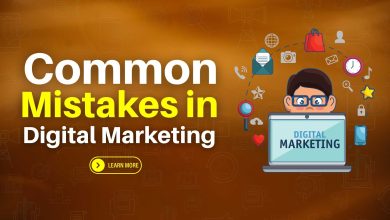Online Advertising vs Offline Advertising
The advertising world has seen a massive shift in recent years with the rise of the internet and digital technologies. Traditional offline advertising methods, such as billboards, TV and radio ads, and print ads, are still around and are effective, but online advertising has become a game-changer. In this essay, we will explore the differences between online advertising and offline advertising.
Offline Advertising,
Offline advertising, also known as traditional advertising, refers to any advertising method that does not involve the internet or digital technologies. This includes print ads in newspapers and magazines, TV and radio commercials, billboards, flyers, and brochures. Offline advertising has been a staple of the advertising industry for many years and is still an effective method of advertising. However, with the rise of the internet, offline advertising has faced stiff competition from online advertising.
Online Advertising,
Online advertising, also known as digital advertising, refers to any advertising method that involves the internet or digital technologies. This includes banner ads, social media ads, search engine advertising, email advertising, and video advertising. Online advertising has become increasingly popular over the years and has proven to be a highly effective method of advertising. It allows businesses to reach a wider audience, target specific demographics, and measure the success of their campaigns accurately.
One of the main differences between online advertising and offline advertising is the ability to reach a wider audience. With offline advertising, businesses are limited to the audience in a specific area. For example, a billboard on a highway will only reach the people who drive by it. With online advertising, businesses can reach a global audience. This has opened up new opportunities for businesses to expand their reach and increase revenue.
Another difference between online advertising and offline advertising is their ability to target specific demographics. With offline advertising, businesses often have to rely on broad demographic information to target their campaigns. For example, a company might run a TV ad during a particular program with the hope that their target audience is watching. This can be a hit or miss strategy, as there is no guarantee that the right people will see the ad. With online advertising, businesses can target specific demographics with pinpoint accuracy. For example, a business can run a Facebook ad campaign that only targets people between the ages of 25-34 who live in a specific city and have an interest in a particular product or service. This level of targeting is not possible with offline advertising.
Online advertising also allows businesses to measure the success of their campaigns more accurately. With offline advertising, it can be challenging to measure the effectiveness of a campaign. For example, a business might run a print ad in a magazine and hope for the best. There is no way to measure how many people saw the ad or how many people took action as a result of the ad. With online advertising, businesses can track every aspect of their campaign, from the number of people who saw the ad to the number of people who clicked on the ad and made a purchase. This data allows businesses to make informed decisions about their marketing strategies and adjust their campaigns as needed.
Advantages of Online Advertising,
Despite the advantages of online advertising, offline advertising still has its place in the advertising world. For example, a local business may find that advertising in the local newspaper or on a local radio station is still an effective way to reach their target audience. Additionally, offline advertising can be an effective way to build brand awareness and create a physical presence for a business.
Advantages of Offline Advertising,
Another advantage of offline advertising is its ability to create an emotional connection with the audience. A TV commercial or a print ad can create a memorable experience that connects with the audience on an emotional level. This can be challenging to achieve with online advertising, which is often focused on the call-to-action and immediate response.
In conclusion, both online advertising and offline advertising have their strengths and weaknesses. Online advertising allows businesses to reach a wider audience, target specific demographics, and measure the success of their campaigns more accurately. However, offline advertising can still be effective in reaching a local audience, creating an emotional connection, and building brand awareness.



